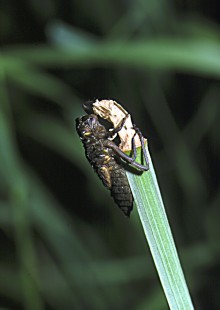
1
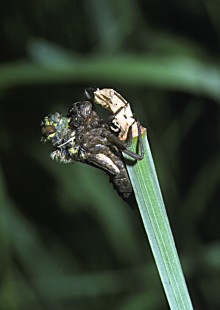
2

4
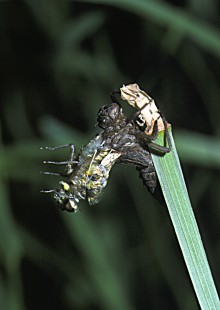
5
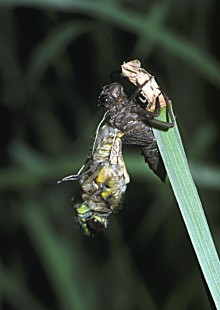
8

9

10

11

12
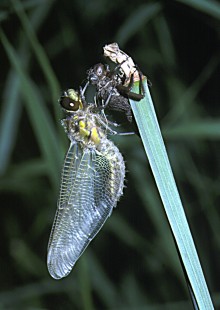
13

15
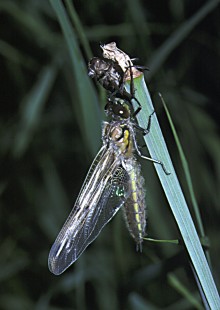
16
Dragonfly Emergence Sequence
The sequence shows the emergence of a Four-Spotted
Libellula Dragonfly (Libellula quadrimaculata) from its
larval case.
They were taken in May 1999 on a reed stem at 'Round
Pond' early morning to midday. This was one of the
'camera accessible'
emergences of about 10 that took place over a few days
on grass stems, daffodil tops and even a flowering
bluebell. Notes are
included below
|
|
|
|
|
|
|
|
|
|
|
|
|
|
|
|
|
|
The numbers of the images are not consecutive as we
have removed parts of the sequence showing little change.
The temperature was about 16C in full shade (the images
were taken with flash).
The whole sequence from the nymph exiting the water to flying off takes about 5 hours.

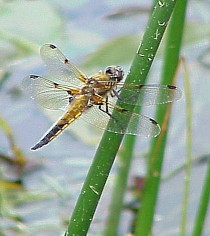 This is how you are more likely to see
a Four-Spotted Libellula Dragonfly (Libellula
quadrimaculata) at the pond side warming itself in the
sun
This is how you are more likely to see
a Four-Spotted Libellula Dragonfly (Libellula
quadrimaculata) at the pond side warming itself in the
sun
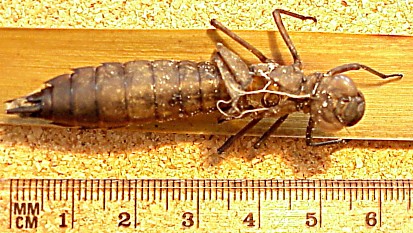 Most dragonfly emergences take place in the
comparative
safety of night. We don't know whether morning emergence
is typical for this species, or something about our
site. On
ponds where you find dragonflies have a good look at
stems
near the water's edge - they may reveal the empty
larval
cases as evidence of what took place one night. This is
an
old larval case, believed to be of an Emperor
Dragonfly
(Anax Imperator) that gives you an idea of what to
look
for.
Most dragonfly emergences take place in the
comparative
safety of night. We don't know whether morning emergence
is typical for this species, or something about our
site. On
ponds where you find dragonflies have a good look at
stems
near the water's edge - they may reveal the empty
larval
cases as evidence of what took place one night. This is
an
old larval case, believed to be of an Emperor
Dragonfly
(Anax Imperator) that gives you an idea of what to
look
for.
 At the other end of the size scale here
is what we believe to be a Damselfly
Laval case (species unknown). You can still see the
threads of the spiracles.
At first sight these look more like the splash of a
bird dropping so look hard.
At the other end of the size scale here
is what we believe to be a Damselfly
Laval case (species unknown). You can still see the
threads of the spiracles.
At first sight these look more like the splash of a
bird dropping so look hard.